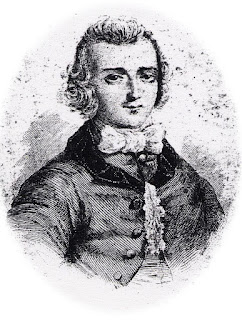What's the Connection Between Writing and a Game of Chess?
 |
| Saussure on Language - Limited Boundaries |
“…from the simultaneous presence of
other units.”
To be of value, the unit must function and establish its role
within the system.
This leads on to Saussure’s
conviction that no thing has intrinsic value. His example is that “…chess
pieces change in value according to the moves that are made.” By this, he means
that the pieces are the internal grammar of the set, taking on a diachronistic
(ie. historical) role within the synchrony (the now) of the game. This can be
applied to any other set, for example, language.
Saussure's Linguistics - Signifier
and Signified
The most obvious point is that a book
or a symphony is not a chess-set.
As Stuart Sim says, in his essay on Jacques
Derrida:
“…structuralist criticism also blurs the distinction between the
aesthetic and the non-aesthetic.”
Functional value might apply to the piece in
the chess set, but that is not a sufficient condition for aesthetic experience,
and, therefore, for aesthetic value. (Although - if the chess set were
beautifully carved, this might then be true.)
Further, Saussure’s structuralism
has no place within its limited boundaries to accommodate and recognise, for
example, poetry’s creative energy.
From his analysis of words, Saussure
produces three notions:
- The signified, which is the mental concept.
- The signifier, which is the sequence of sounds related to the concept.
- The sign, which is the union of signified and signifier.
The relationship of the signifier to the signified is
arbitrary; meaning it is agreed upon by a linguistic community. Therefore:
“Signs function through their relative position” and from this conclusion the
judgement of their value is derived.”
Criticism of Saussure by Jacques
Derrida
All of this is logical in terms of understanding
structure, but is attacked by Jacques Derrida
as sterile as far as aesthetic value is concerned.
“Form fascinates when one no
longer has the force to understand force from within itself.”
Derrida means
that Saussure’s theory tells us nothing about aesthetic value, the
psychological or social aspects of novels, the drama of a great painting, the
ineffableness of music.
“It is,” says Derrida, “a tyranny of form…which is held
to inhibit the creative imagination.”
While Saussure insists on combining words according to
the rules of syntax, Derrida breaks with this tradition. Derrida allows
language to develop in new ways, creatively, aesthetically and, at least in
theory, valuably. “Deconstruction relies heavily on this notion of paradigmatic
relation.” Derrida and his followers make extensive use of punning and
wordplay. This suggests: “a much more random motion for thought.”
Saussure argues that complications would arise through
paradigmatic relations, causing our common language to break down, but this
seems unlikely. Derrida says: “It (meaning structuralism) classifies and
corrects rather than interprets or creates.” Derrida derides the interior
design of the structuralist movement with what he describes as: “…the joyous
affirmation of the play of the world and of the innocence of becoming, the affirmation
of a world of signs without fault, without truth and without origin, which is
offered to an active interpretation.” Structuralism imposes form rather than
discovers it.
Stuart Sim and the Limitations of
Saussure's Theory
Stuart Sim makes a strong criticism of Derrida’s
extreme opposition to Saussure. He accepts the limitations of Saussure’s theory
of reducing everything through wholeness, self-regulation and transformation in
order to determine value. However, he also finds inadequacies in Derrida’s
theory. “In Derrida’s scheme, meaning is endlessly being produced and just as
endlessly being erased, so that there are no fixed points of reference.” This
puts more pressure on the reader to interpret, so that: “Value judgements of
the traditional kind become impossible,” and so, in Sim’s opinion, this
isolates readers.
Sim asserts: “Reference points can only be jettisoned
after they have been learned and absorbed.” It seems that we need Saussure’s
structuralism to give us reference points to guide us, because: “…it still
generates illuminating data about the internal relations of texts,” and this is
Saussure’s main intention of determining value.
Saussure's structuralism seems to be a kind of
formalism, and it is argued by many that this approach is too narrow to cover
all the types of aesthetic values and qualities, like the psychological insight
of Shakespeare, and the beauty of nature, music and paintings.
Aesthetic value, as a subjective quality that might,
perhaps, lead to objectivity through Kantian theory, cannot be confined within
Saussure’s account.
Sources:
"Structure, sign and play in the discourse of the
human sciences," Jacques Derrida, Art
Context and Value, Ed: Stuart Sim, The Open University, 1992.
Literary Theory, Jonathan Culler, Oxford
University Press, Oxford, New York, 1997.
Positions, Jacques Derrida,
Translated and Annotated by Alan Bass, The University of Chicago Press, 1972.
"Structuralism and post-structuralism,"
Stuart Sim, Philosophical Aesthetics,
Ed: Oswald Hanfling, Blackwell Publishers in association with OUP, 1992.
"Introduction to the structural analysis of
narrative," Roland Barthes, Art,
Context and Value, Ed: Stuart Sim, The Open University, 1992.


Comments